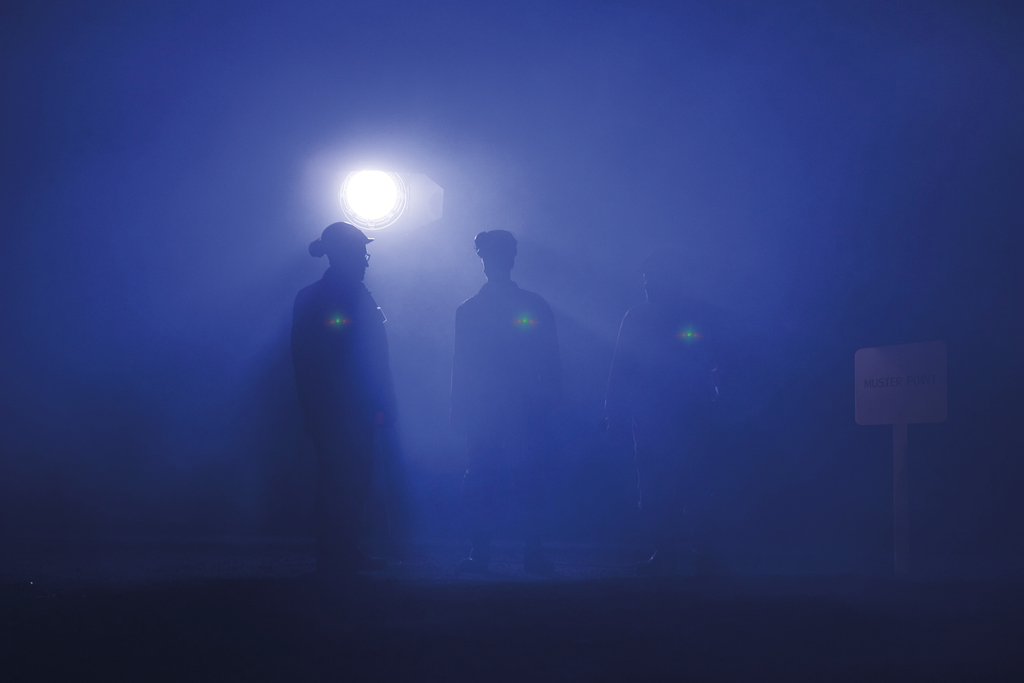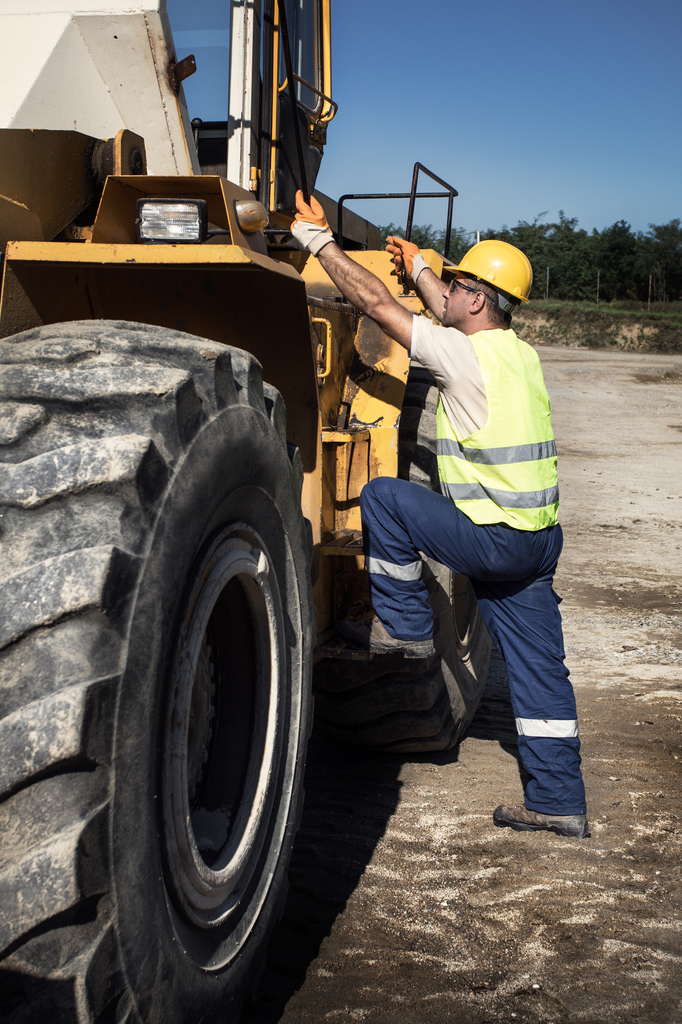
Kelly Rose
Editor

Kelly Rose
Editor
Using connected safety technology to ensure no one gets left behind. Miriam O'Connell takes a look at how to to identify lone workers and how to protect them.
WHEN CREATING a safety plan for lone workers, companies often need to broaden their definition of what a lone worker is. There are some clear situations where an employee qualifies as a lone worker, such as people who work independently in remote locations or who frequently drive alone between worksites.
However, more employees qualify as lone workers than one might imagine. Berg Insight notes that 53 million people are designated as lone workers in Europe and North America alone. These vulnerable workers account for about 15 percent of the total workforce in those regions and the unique safety challenges of lone workers must be addressed.
Here are four main types of lone working scenarios to help your company comprehensively identify your lone workers:
Indoors
A general rule, a lone worker is one working out of sight or sound of a colleague or other qualified individuals. From warehouses and laboratories to construction sites and underground water treatment plants, many employees are considered to be working alone while indoors, even if there are others working in the building.
Outdoors
Potentially dangerous outdoor worksites can include oilfields and power plants, water treatment works and more. A worker can be alone for extended periods of time or for the entire workday, often in challenging environmental conditions.
Driving
From long distance lorry drivers to individuals who drive out to remote sites, employees can find themselves in dangerous conditions while on the road. One in five workplace fatalities involve those employed as drivers. The challenges and dangers of this work are compounded after a long day on the job when the driver is fatigued or when weather conditions are poor.
Remote
Biologists, oilfield operators and maintenance personnel, land surveyors and more. Many situations these workers find themselves in require equipment that connects them to emergency help while also actively monitoring their environment for hazards so they can focus on the task at hand.
Lone Worker Protection & Workplace Stress
Because lone workers are more physically isolated than people who work in groups, they can experience their own unique levels of high stress. Providing a lone worker with a reliable, connected safety device gives them a lifeline to others should an accident occur.
The most advanced lone worker safety technology can combine many benefits to protect those most at risk:
Call for immediate assistance – devices that have two-way voice communication via text or optional push-to-talk, offer a way for your workers to quickly reach out for help, regardless of the circumstances.
Fall detection – the ability to detect an unusual impact or any drastic changes in tilt to indicate a potential slip, trip or fall. Once identified, the device can trigger an emergency alert, even if the device wearer is knocked unconscious.
No motion detection – an accelerometer in a device can also detect if a worker has stopped moving for some time. This can indicate several hazardous situations a worker may have encountered, such as loss of consciousness while stationary, which would not trigger a fall alert.
Missed check-in – for lone workers in the field or working independently for extended periods of time, rather than relying on text messages, phone calls or other manual methods prone to human error, regular check-ins can be automated using a pre-configured countdown timer. With a push of a button, the worker can acknowledge that they are OK at pre-set intervals without a supervisor needing to directly contact the worker to check and verify their wellbeing. If a check-in is missed and the worker fails to respond to a warning alert, the device can trigger a tailored emergency response protocol.
Gas detection – lone workers need to know what hazards are present in their environment, even the ones they can’t see. Whether it be exposure to explosive and flammable gases (LEL), common hazardous gases such as hydrogen sulphide (H2S), carbon monoxide (CO) and other toxic gases or volatile organic compounds (VOCs), early detection and notification is crucial. Some lone worker safety monitoring devices can also collect gas detection data, including low-level gas emissions and alert data, that help make organisations aware of a situation before it becomes critical.
Two-way communications – whether it be informing workers of impending weather events, work updates or other important information, being able to quickly connect with those in the field via two-way voice or text communications is key. In the event of an injury or during an evacuation, it also provides the worker with confidence that someone can account for their safety throughout the event.
Lone workers & violence
The Health and Safety Executive (HSE) defines work-related violence as: Any incident in which a person is abused, threatened or assaulted in circumstances relating to their work. This can include verbal abuse or threats as well as physical attacks.
According to the 2006/7 British Crime Survey (BCS), there were an estimated 684,000 workplace incidents, comprising 288,000 assaults and 397,000 threats of violence.
By providing lone workers with safety monitoring technology and a means to discretely communicate in real-time with personnel empowered to deploy emergency responses, the employee has the tools they need to help them feel safe when working. It’s also important to train these workers on when to seek help; meaning, before the situation turns into one of physical violence.
Preventative steps
When it comes to lone worker safety, knowing the risks in advance and putting preventative measures in place to mitigate them is your best bet to keep your people safe. And if those efforts are supported by ongoing monitoring, the savings, both in terms of lives saved and cost, can really add up. But what is the most effective way to go about safeguarding your lone workers? Here are three critical steps to deliver the results you’re looking for.
Step One: Conduct a comprehensive risk assessment
Prevention begins with understanding and identifying ways employees can be harmed
A risk assessment for lone workers starts by identifying each type of lone worker situation in your workplace and creating a committee comprised of differing skillsets to analyse them; fully assessing a situation—and its potential risks. Someone with health and safety expertise could, for example, be paired up with someone with chemical assessment experience, along with a person with in-depth knowledge about the equipment used.
Step-by-step analyses on workplace activities should be completed, flagging situations that can cause injuries or threaten health. These might include substances used that may be potentially harmful; risk factors associated with the equipment used; and the identification of times when a lone worker is particularly at risk. Some risks may be inherent in all lone worker jobs, while others may be specific to certain geographies and roles.
Step Two: Create a Plan to Mitigate Risk
Categorise risks—then eliminate, reduce or manage them
Once the risk assessment has been completed with the potential risks for each group of lone workers identified, the next step is to evaluate how your company is currently addressing these risks and to fill in the gaps, as appropriate, to mitigate risk even further.
Determine what procedures you’ll need to implement to mitigate the risks that remain—or any new risks that may be created as a result of the changes. Hazardous areas, for example, may be shut off unless a worker absolutely must be there. PPE can be improved upon, first aid stations added, and communication devices can be enhanced to keep lone workers safely connected.
Step Three: Invest in Lone Worker Safety Devices and Monitoring
Beyond saving lives, profitability and morale are boosted over the longer-term
What to look for in lone worker safety devices
Devices that offer integrated solutions for lone worker safety are your best bet; avoid “one-trick ponies”. It is less practical to find a different device for each individual monitoring and safety function required—and then you may find that these individually acquired devices don’t work well together.
Ensure that the devices have highly effective connectivity. The goal is to have a highly reliable lifeline for every employee.
Lone worker monitoring
When an incident occurs, your company must respond in real time and every detail counts. It’s crucial to understand who is involved, what happened, where the employee is located, precisely, whether indoors or out and whether anyone is nearby as well as if the threat is an ongoing one.
A monitoring solution with customisable alerts eliminates the need to constantly monitor a map of worker locations. Alerts should include the worker’s name, location, and reason for the alert – whether it’s a person-down alarm, panic situation, missed check-in or exposure to a gas hazard. Alerts can be employee-activated if the worker is conscious, but the technology should also have the capability to send an alarm automatically if no motion is detected. Remote monitoring teams should be available 24/7 and trained to respond to any type of emergency when it arises.
The bottom line
Knowing that wellbeing is monitored 24/7 by safety professionals who can respond instantly should an incident occur, significantly reduces workplace stress. Investing in monitoring also provides assurance to regulatory bodies that you have the proper safety measures in place and less ongoing risk of having an accident or injury occur.
The intangible costs – like the reduction in employee turnover — are significant. Workplaces that provide best-in-class safety protection demonstrate that they care about their workers leading to enhanced morale, efficiency, and employee loyalty.
Ultimately business needs and risks change over time. A scalable connected safety solution that offers the most reliable protection with the maximum flexibility to suit an organisation’s requirements, and budget, will futureproof this potentially life-saving investment.
Miriam O'Connell is monitoring services supervisor at Blackline Safety Europe. For more information, visit www.blacklinesafety.com




12 De Grey Square
De Grey Road
Colchester
CO4 5YQ
UNITED KINGDOM
01787 222684